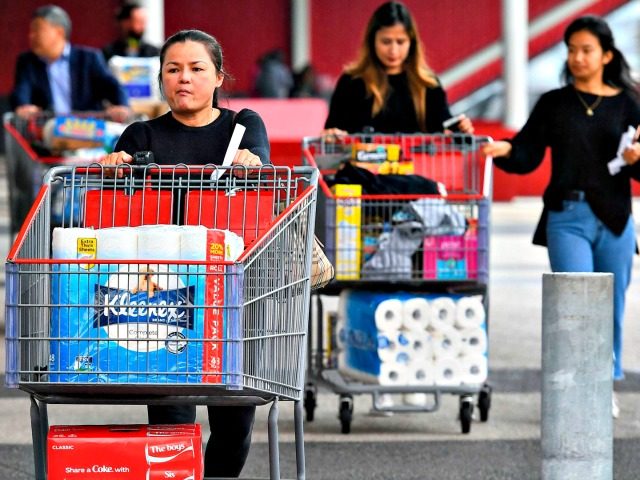One of the main discussions that have been taking place as the coronavirus outbreak continues is why toilet paper cannot stay on the shelves at retailers across America, with many theories emerging, including unnecessary hoarding.
Moreover, many have asked about why Americans seem to consider toilet paper essential to surviving this coronavirus pandemic, including a comment on the issue by U.S. Health and Human Services Secretary Alex Azar.
“Toilet paper is not an effective way to prevent getting the coronavirus, but they’re selling out,” Azar said.
A report on the Medium website reported it is all about the supply chain:
There’s another, entirely logical explanation for why stores have run out of toilet paper — one that has gone oddly overlooked in the vast majority of media coverage. It has nothing to do with psychology and everything to do with supply chains. It helps to explain why stores are still having trouble keeping it in stock, weeks after they started limiting how many a customer could purchase.
In short, the toilet paper industry is split into two, largely separate markets: commercial and consumer. The pandemic has shifted the lion’s share of demand to the latter. People actually do need to buy significantly more toilet paper during the pandemic — not because they’re making more trips to the bathroom, but because they’re making more of them at home. With some 75% of the U.S. population under stay-at-home orders, Americans are no longer using the restrooms at their workplace, in schools, at restaurants, at hotels, or in airports.
Georgia-Pacific, a leading toilet paper manufacturer based in Atlanta, estimates that the average household will use 40 percent more toilet paper than usual if all of its members are staying home around the clock. That’s a huge leap in demand for a product whose supply chain is predicated on the assumption that demand is essentially constant. It’s one that won’t fully subside even when people stop hoarding or panic-buying.
And, moreover, a lot of toilet paper has been delivered to commercial customers — hotels, Starbucks, office buildings — that are now shuttered because of the virus.
“Talk to anyone in the industry, and they’ll tell you the toilet paper made for the commercial market is a fundamentally different product from the toilet paper you buy in the store,” Medium reported. “It comes in huge rolls, too big to fit on most home dispensers. The paper itself is thinner and more utilitarian. It comes individually wrapped and is shipped on huge pallets, rather than in brightly branded packs of six or 12.”
“Not only is it not the same product, but it often doesn’t come from the same mills,” Jim Luke, a professor of economics at Lansing Community College, who once was head of planning for a wholesale paper distributor, said in the Medium report. “So for instance, Procter & Gamble [which owns Charmin] is huge in the retail consumer market. But it doesn’t play in the institutional market at all.”
Georgia-Pacific, which sells to both retail and commercial, told Medium “its commercial products also use more recycled fiber, while the retail sheets for its consumer brands Angel Soft and Quilted Northern are typically 100 percent virgin fiber.”
And it would be complicated to rearrange the supply chain.
“The normal distribution system is like a well-orchestrated ballet,” Willy Shih, a professor at Harvard Business School, said in the Medium report. “If you make a delivery to a Walmart distribution center, they give you a half-hour window, and your truck has to show up then.”
“I’m absolutely convinced that very little was triggered by hoarding,” Luke said in the Medium report.
Follow Penny Starr on Twitter.

COMMENTS
Please let us know if you're having issues with commenting.